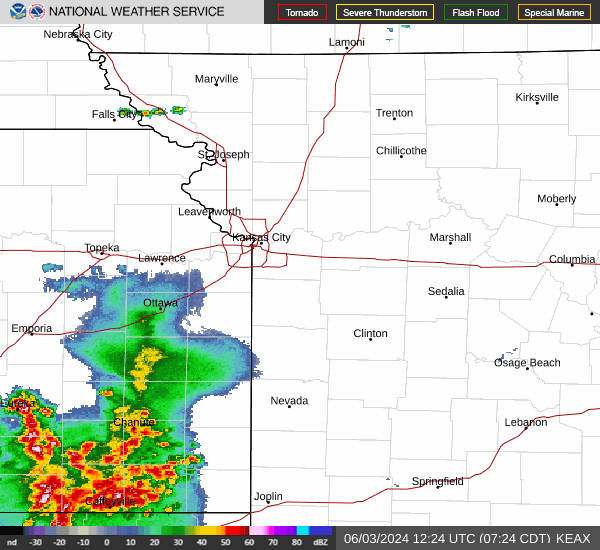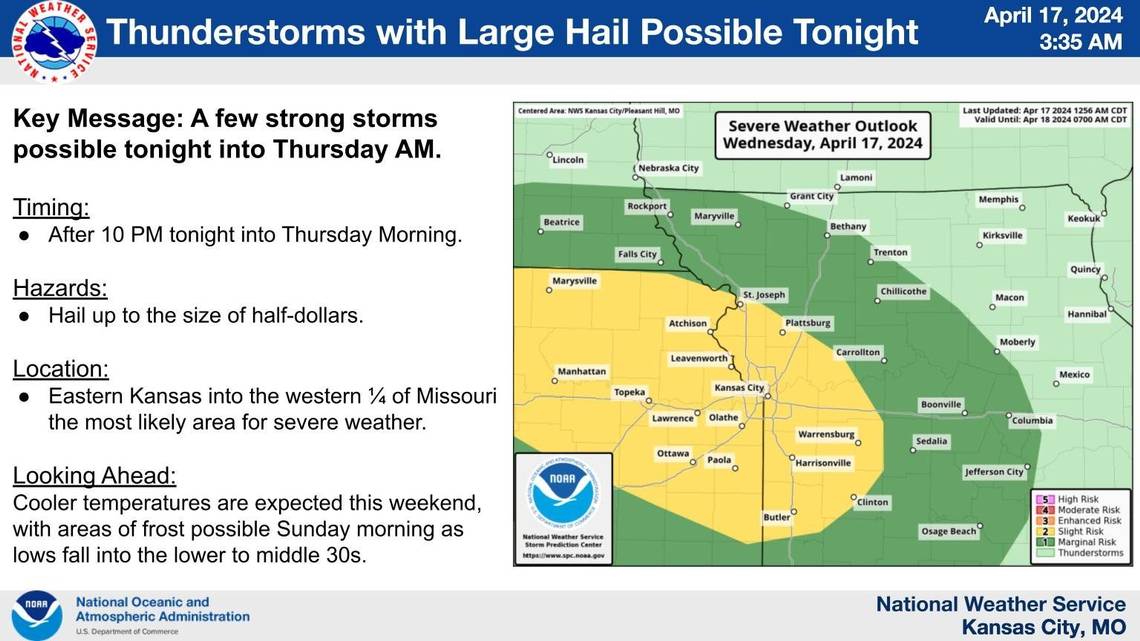A day after severe thunderstorms brought a small tornado to the Kansas City area, the metro will see much quieter weather on Wednesday, according to the National Weather Service.
The weather service has forecast that another storm system will pass through the region overnight, which could result in strong to severe thunderstorms. These storms could bring damaging winds and hail, potentially as big as golf balls or even larger.
Before the storms arrive, Kansas City will see sunny skies as temperatures climb to near 80 degrees. That is well above the average temperature of 66 degrees for this time of year. Gusty winds, which reach mid-20 mph in the morning, are expected to gradually become calmer by noon.
Large hail, damaging winds possible
The timing of the next storm system will be between 10 p.m. Wednesday and 5 a.m. Thursday, according to the weather service.
Isolated strong to severe storms are possible primarily along and south of Interstate 70. The stronger storms will be capable of producing damaging winds and large hail, ranging up to 1.75 inches in diameter, the weather service said.
Eastern Kansas into the western quarter of Missouri are most likely to see severe weather if it develops.

According to the weather service’s Storm Prediction Center, the largest hail is expected west of the Kansas City metro in Kansas, including Topeka, Manhattan and Junction City. Kansas City is at a 15% risk of having one-inch hail or larger within 25 miles of a point.
The storms could recharge south of U.S. 50 highway after sunrise, the weather service said in its forecast discussion.
Showers and thunderstorms will be possible on Thursday, bringing much-needed rain across much of the region.
Cooler weather ahead
After the storms move out of the area, cooler air will move in, sending temperatures below average for this time of year. Temperatures will be in the mid-60s on Thursday, the mid- to upper 50s on Friday and Saturday and the low 60s on Sunday, according to the weather service.
Frost will be possible Sunday morning as overnight temperatures fall into the lower to middle 30s.
The cooler temperatures will be temporary as they will climb back into the 70s early next week. The next best chance for rain is on Monday.
“The springtime pattern of strong temperature fluctuations with intermittent chances of showers and storms is firmly established and looks to continue for the foreseeable future,” the weather service said.
A live data feed from the National Weather Service containing official weather warnings, watches, and advisory statements. Tap warning areas for more details. Sources: NOAA, National Weather Service, NOAA GeoPlatform and Esri.
Open
